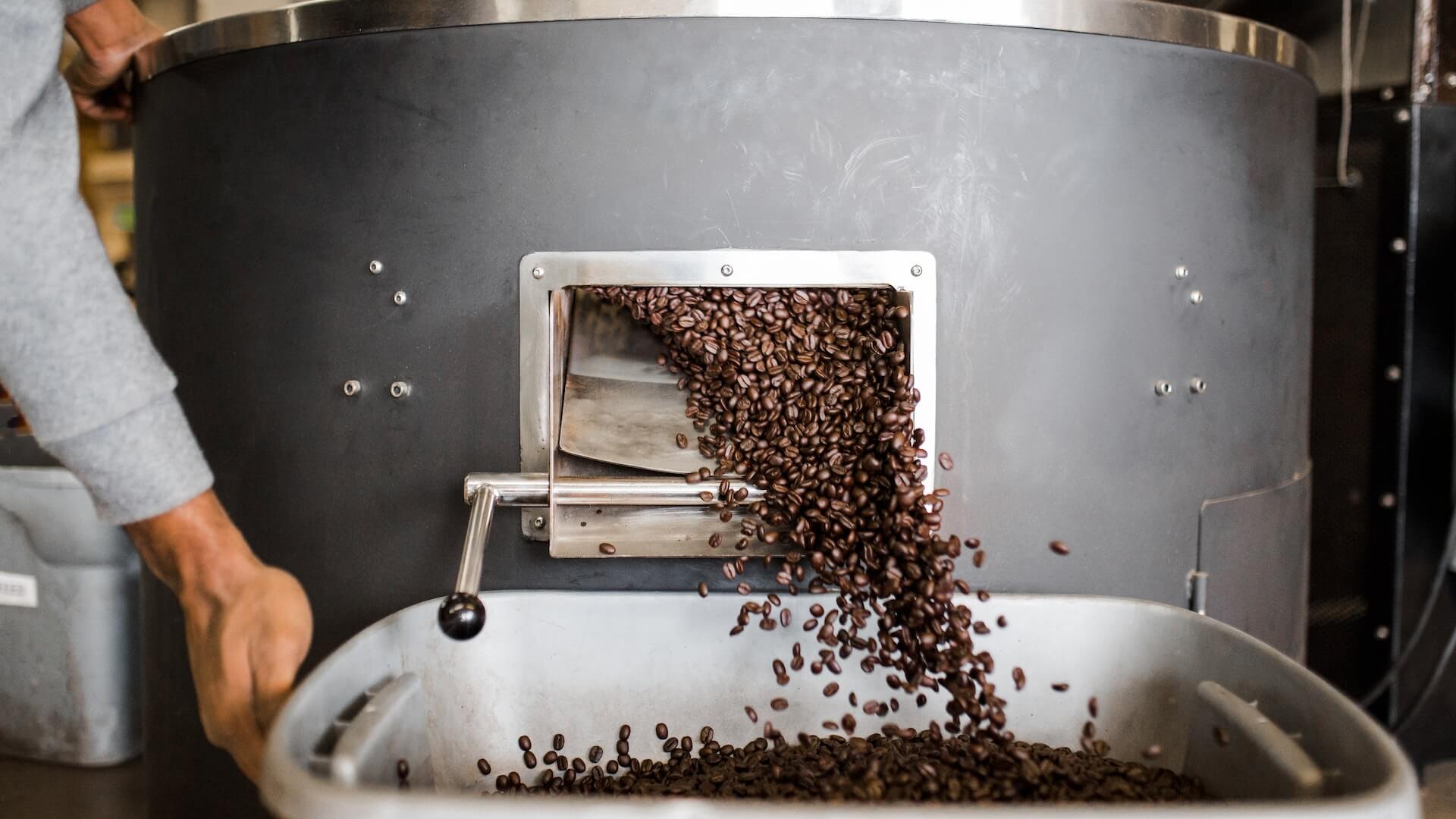Coffee has become an integral part of our daily lives. A steaming hot cup of coffee in the morning helps to kick start the day, while a midday caffeine boost keeps us going through long work hours. But have you ever wondered about the journey your coffee takes before it reaches your cup? From bean to brew, the world of coffee is fascinating and complex. In this blog post, we will take a deep dive into the world of coffee, exploring the history, cultivation, roasting, and brewing of this beloved beverage. Whether you’re a coffee connoisseur or just someone who enjoys a good cup of joe, join us on this journey of discovery as we explore the fascinating world of coffee.
Introduction to the world of coffee
Coffee is more than just a beverage. It is a global phenomenon that has captivated people from all walks of life for centuries. From its humble origins as a simple bean to the complex drink that graces the cups of millions around the world, coffee has a rich and fascinating history.

In this blog post, we will embark on a journey to explore the world of coffee – from its cultivation to the art of brewing. We will delve into the origins of coffee, tracing its roots back to ancient civilizations and discovering the legends and stories that surround its discovery.
But coffee is not just a historical relic; it is a living and vibrant industry that continues to evolve and thrive today. We will explore the different varieties of coffee beans, from the bold and robust flavors of Arabica to the earthy and intense notes of Robusta. We will also dive into the intricate processes of coffee production, from harvesting and processing to roasting and grinding, unraveling the secrets behind that perfect cup of joe.
As we venture further into the world of coffee, we will also uncover the various brewing methods and techniques that are employed to extract the exquisite flavors locked within those tiny beans. From traditional brewing methods like the French press and pour-over to the more modern approaches like the espresso machine and cold brew, we will help you navigate the vast landscape of brewing options.
The journey of a coffee bean: From farm to your cup
Coffee, a beloved beverage enjoyed by millions worldwide, has a fascinating journey before it reaches your cup. From the picturesque coffee farms nestled in remote regions to the meticulous roasting process, each step contributes to the rich flavors and aromas that awaken our senses.
It all begins on the coffee farms, where dedicated farmers cultivate and nurture the coffee plants. These farms, often found in lush tropical regions, provide the ideal conditions for coffee to thrive. From the moment the coffee cherries are hand-picked, the journey of the coffee bean begins.
Once harvested, the coffee cherries undergo a meticulous process to extract the precious beans within. The cherries are carefully sorted, with only the ripest ones selected for further processing. Depending on the desired flavor profile, the beans may be processed using either the dry or wet method.
In the dry method, the cherries are spread out on large patios to dry under the sun. This natural process allows the beans to absorb the flavors of their surroundings, resulting in unique and complex tasting notes. On the other hand, the wet method involves removing the outer layers of the cherries, fermenting the beans, and washing them to remove any remaining pulp.
Once the beans are dried and processed, they are ready to be shipped to various roasters around the world. Roasting, a crucial step in the coffee journey, transforms the raw green beans into the aromatic brown ones we are familiar with. Roasters carefully monitor factors such as temperature and time to bring out the desired flavors and characteristics of each bean.
Finally, the roasted beans make their way to coffee shops and homes, where they are ground and brewed to perfection. Whether you prefer a smooth and balanced cup of light roast or a bold and robust espresso, the journey of the coffee bean culminates in the moment you savor that first sip.
Understanding the coffee plant and its varieties
To truly appreciate the art of brewing a perfect cup of coffee, it is essential to understand the coffee plant and its various varieties. Coffea, the genus that encompasses the coffee plant, is a tropical evergreen shrub that belongs to the Rubiaceae family. Native to Africa, specifically Ethiopia, coffee plants are now cultivated in different parts of the world due to their high demand and economic significance.

The coffee plant is known for its glossy, dark green leaves and delicate white flowers that bloom in clusters. These flowers, though visually appealing, play a crucial role in the development of the coffee cherries. After pollination, these cherries take several months to ripen and transition through different colors, from green to yellow, and finally to vibrant red or purple, depending on the variety.
Speaking of varieties, there are numerous species of the coffee plant, but the two most commonly cultivated ones are Coffea arabica and Coffea robusta. Arabica coffee, often referred to as the “superior” variety, is known for its delicate flavor profile, mild acidity, and nuanced aromas. It thrives in higher altitudes, making it primarily grown in countries like Colombia, Ethiopia, and Brazil.
On the other hand, robusta coffee is more robust and has a higher caffeine content. It is often used in blends to enhance the body and crema of espresso. Robusta plants are hardier, able to withstand lower altitudes and harsher growing conditions. This variety is commonly found in countries such as Vietnam, Brazil, and Indonesia.
Understanding the distinctions between these coffee varieties allows coffee enthusiasts to appreciate the unique characteristics each brings to the brew. From the fruity and floral notes of Arabica to the earthy and bold flavors of Robusta, coffee lovers can embark on a sensory journey through the world of coffee, exploring the diverse tastes and aromas that each cup has to offer.
The art of coffee roasting
Roasting is a delicate balance of science and craftsmanship, requiring skill and precision to achieve the desired results.
Roasting begins with the selection of high-quality green coffee beans sourced from different regions around the world. These beans have distinct characteristics that contribute to the final flavor profile of the coffee. The roaster’s expertise lies in understanding these nuances and manipulating the roasting parameters to enhance or highlight specific flavors.
The roasting process itself involves subjecting the green coffee beans to carefully controlled heat. As the beans heat up, they undergo a series of chemical reactions that transform their composition. The heat causes moisture to evaporate, causing the beans to expand and change color. This is known as the “first crack,” signaling that the beans have reached a light to medium roast level.
However, the roasting process doesn’t stop there. For those who prefer a darker, bolder flavor, the beans can be roasted for longer, entering the “second crack.” This stage brings out richer, more complex flavors but also leads to the development of oils on the surface of the beans.
Roasters carefully monitor the temperature and duration of the roast to achieve the desired balance between acidity, body, and aroma. They rely on their senses – sight, sound, and smell – to determine the perfect roast profile for each batch of beans.
Different brewing methods: Exploring espresso, pour-over, French press, and more
When it comes to brewing coffee, there are numerous methods to explore, each offering a unique flavor profile and brewing experience. From the beloved espresso to the art of pour-over and the classic French press, let’s take a journey through the world of coffee brewing methods.

Espresso, characterized by its strong and concentrated flavor, is brewed by forcing hot water through finely ground coffee beans under high pressure. This method creates a rich and velvety texture with a layer of crema on top, making it the foundation of many coffee-based beverages like cappuccinos and lattes.
On the other hand, pour-over brewing offers a more hands-on and meticulous approach. This method involves pouring hot water over freshly ground coffee in a slow and controlled manner, allowing the water to extract the flavors gradually. The result is a clean and vibrant cup of coffee, highlighting the intricate nuances of the beans.
For those seeking a full-bodied and robust brew, the French press is a popular choice. This method involves steeping coarsely ground coffee in hot water for a few minutes before pressing down a plunger to separate the grounds from the liquid. The result is a bold and flavorful coffee with a rich mouthfeel.
Beyond these traditional methods, there are various other brewing techniques worth exploring, such as the AeroPress, Chemex, and Turkish coffee. Each method offers its own unique characteristics, allowing coffee enthusiasts to experiment and discover their preferred brewing style.
The importance of water quality in brewing coffee
When it comes to brewing coffee, water quality plays a crucial role in determining the taste and overall quality of your cup of joe. Many coffee enthusiasts often overlook this factor, focusing solely on the beans and brewing methods. However, the water you use can significantly impact the flavor, aroma, and extraction of the coffee.
Firstly, the cleanliness of the water is of utmost importance. Tap water may contain impurities such as chlorine, minerals, or even residual flavors that can interfere with the coffee’s taste. Therefore, it is essential to use filtered or purified water to ensure a clean and neutral base for brewing.
In addition to cleanliness, the mineral content of the water is another critical factor. Minerals like magnesium and calcium contribute to the extraction process and help bring out the flavors in coffee. On the other hand, excessive mineral content can result in a harsh and bitter taste. It is recommended to aim for water with a mineral content of around 150 parts per million (ppm) for optimal extraction and flavor balance.
Furthermore, the water temperature during brewing plays a vital role. The ideal temperature range for brewing coffee falls between 195°F to 205°F (90°C to 96°C). Using water that is too hot can lead to over-extraction, resulting in a bitter taste, while water that is too cold may result in under-extraction, producing a weak and flat flavor.
To ensure consistency in water quality, using a high-quality water filter or investing in a water filtration system is highly recommended. Additionally, testing the mineral content and pH level of your water periodically can help you adjust your brewing methods accordingly.
Understanding coffee tasting notes and flavor profiles
Understanding coffee tasting notes and flavor profiles is an essential skill for any coffee enthusiast or aspiring barista. Just like wine, coffee has a complex range of flavors and aromas that can be discerned and appreciated by those with a developed palate.

Tasting notes are the specific flavors and aromas that can be detected in a cup of coffee. These can range from fruity and floral to nutty and chocolatey, with countless variations in between. Each coffee bean has its own unique combination of tasting notes, influenced by factors such as the coffee variety, growing region, and processing method.
To truly appreciate and understand coffee tasting notes, it’s important to engage all your senses. Start by observing the appearance of the coffee, noting its color and clarity. Then, take a moment to inhale the aroma – this can give you clues about the flavors you can expect to taste.
When it comes to tasting, take a small sip and let the coffee coat your entire palate. Pay attention to the different flavors that emerge – is it bright and acidic, or smooth and mellow? Is there a hint of citrus or caramel? Take your time to analyze and savor each sip, allowing the flavors to unfold and evolve.
To help you navigate the world of coffee tasting notes, many coffee professionals and roasters provide flavor profiles for their beans. These profiles describe the dominant flavors and characteristics of a particular coffee, offering guidance to consumers in choosing their preferred brews.
Experimentation is key to developing your palate and expanding your coffee knowledge. Try different coffee varieties, origins, and brewing methods to explore the vast array of flavors that coffee has to offer. Keep a record of your tasting experiences, noting the tasting notes that resonate with you the most.
Exploring coffee cultures from around the world
Coffee is more than just a beverage; it is an integral part of cultures around the world. Each country has its unique way of preparing and consuming coffee, reflecting its history, traditions, and values. Exploring coffee cultures from different corners of the globe can be a delightful and enlightening experience for any coffee enthusiast.
In Italy, for example, coffee is a way of life. Italians take their coffee seriously, with a focus on quality and simplicity. The iconic espresso is the star of the show, enjoyed in small, strong shots that pack a flavorful punch. Whether sipped at a bustling café or standing at a bar, the Italian coffee culture is centered on the enjoyment of the moment and the art of conversation.
Traveling to the Middle East, coffee takes on a different form with the beloved Turkish coffee. This thick and rich beverage is prepared by boiling finely ground coffee beans with sugar and water in a special pot called a cezve. Served in small cups, Turkish coffee is often accompanied by sweet treats and symbolizes hospitality and friendship in the region.
In Ethiopia, the birthplace of coffee, the brewing process is a ritualistic affair. Coffee ceremonies are an important cultural tradition, involving the roasting of fresh coffee beans over an open flame and grinding them by hand using a mortar and pestle. The resulting coffee is brewed in a traditional clay pot called a jebena and served in small cups to signify unity and community.
The coffee culture in Brazil, the largest coffee producer in the world, is vibrant and diverse. From the bustling coffee shops in São Paulo to the cozy cafes in Rio de Janeiro, Brazilians enjoy a variety of coffee beverages. The most popular being the rich and velvety cafezinho, a small and strong cup of black coffee that is often enjoyed throughout the day.
Tips for brewing the perfect cup of coffee at home
Brewing the perfect cup of coffee at home is a delightful and rewarding experience. With a few simple tips, you can elevate your coffee game and enjoy a delicious and aromatic brew every morning.

First and foremost, start with freshly roasted coffee beans. Opt for whole beans instead of pre-ground coffee as they tend to lose flavor and aroma quickly. Invest in a quality burr grinder to grind your beans just before brewing. This ensures maximum freshness and flavor extraction.
Next, consider the water you use. Coffee is mostly water, so using high-quality, filtered water can make a significant difference in the taste of your brew. Avoid using distilled or softened water, as they can affect the flavor profile.
The brewing method you choose also plays a crucial role in achieving a perfect cup of coffee. Whether you prefer a French press, pour-over, or espresso machine, make sure to follow the recommended brewing parameters for each method. This includes the right water temperature, coffee-to-water ratio, and brewing time.
Experiment with different coffee-to-water ratios to find the strength you enjoy. A general rule of thumb is a ratio of 1:16 coffee to water, but feel free to adjust it according to your preference. Keep in mind that the grind size of your coffee also affects the strength and extraction, so adjust accordingly.
Temperature control is another key factor in brewing great coffee. For most brewing methods, water temperature between 195°F and 205°F (90°C to 96°C) is ideal. Use a kettle with a built-in thermometer or an adjustable electric kettle to ensure precise temperature control.
Lastly, don’t forget to clean your brewing equipment regularly. Oils and residue can build up over time, affecting the taste of your coffee. Clean your grinder, brewer, and any other tools you use following the manufacturer’s instructions.
Specialty coffee: The rise of third-wave coffee and the importance of sustainability
In recent years, there has been a remarkable rise in the popularity of specialty coffee, marking the emergence of what is known as the “third-wave” coffee movement. This movement represents a shift towards appreciating coffee as a craft beverage, similar to wine or craft beer, rather than just a morning pick-me-up.
Specialty coffee refers to coffee that is sourced from specific regions, carefully cultivated, and expertly roasted to bring out the unique flavors and characteristics of the beans. It goes beyond the standardized production methods of commercial coffee, focusing on quality, traceability, and sustainability throughout the entire supply chain.
One key aspect of the third-wave coffee movement is its emphasis on sustainability. Coffee production can have significant environmental and social impacts, and third-wave coffee roasters and producers recognize the importance of minimizing their footprint. They prioritize working with farmers who adopt sustainable practices, such as organic farming, fair trade, and direct trade relationships.
Direct trade, in particular, has gained traction within the specialty coffee community. This approach involves establishing direct relationships between roasters and coffee farmers, cutting out middlemen and ensuring fair prices for the farmers. It also allows for greater transparency and traceability, giving consumers the assurance that the coffee they are enjoying is ethically sourced and supports the livelihoods of coffee farmers.
Furthermore, the third-wave coffee movement has also sparked a greater appreciation for the unique flavors and characteristics of different coffee origins. Similar to wine, coffee now boasts a diverse range of flavors, aromas, and profiles, depending on factors such as the coffee variety, growing conditions, altitude, and processing methods used. This has led to coffee enthusiasts seeking out single-origin coffees, which showcase the distinctive qualities of a specific region or farm.
As consumers become more educated about the intricacies of coffee production and the impact of their choices, the demand for specialty coffee continues to grow. This shift towards sustainability and quality has not only elevated the coffee-drinking experience but also created a more equitable and environmentally conscious industry.
Conclusion
Throughout this blog post, we explored the origins of coffee, the different types of beans, the roasting process, and various brewing techniques. By gaining a deeper understanding of the coffee-making process, you can truly appreciate the complexity and flavors of your favorite cup of joe. Whether you’re a seasoned coffee connoisseur or just starting your coffee adventure, we hope this article has provided valuable insights and sparked your curiosity to explore the wonderful world of coffee even further. So grab your favorite mug, savor the aroma, and enjoy every sip of your next cup of coffee, knowing the journey it took to reach your hands. Cheers!



